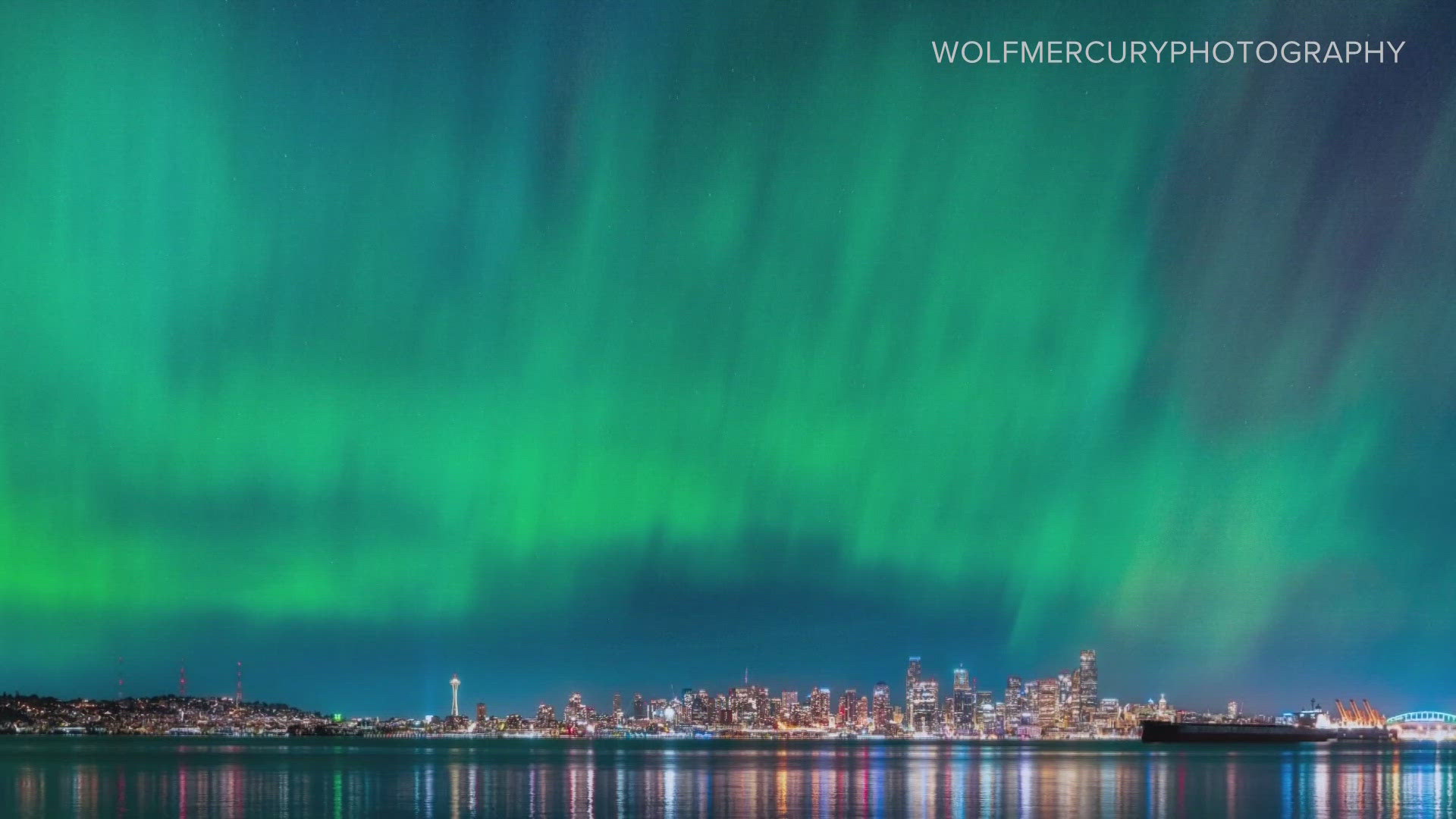SEATTLE — Western Washington was treated to the Northern Lights dancing in the skies this weekend caused by a powerful geomagnetic storm.
Viewers sent in hundreds of photos of the sky glowing purple, green and pink across the state. However, some may be wondering why the photos may seem more impressive than what they saw with their own eyes – did the Aurora Borealis look different from spot to spot?
The difference likely is not with the Aurora itself but with the lens in your camera. Your eyes are not as sensitive to light as your camera phone, allowing the lens to capture more of it in a photograph. Newer camera phones, such as later models of the iPhone, have made improvements in nighttime photography, allowing photos to appear even more vivid than you can see with your own eyes.
The other factor could also be your location. If you’re looking at the Northern Lights in the city where there is light pollution from street lights and buildings, the Aurora Borealis could appear more pale.
“Kind of like you’re looking through a frosted window,” said KING 5 senior meteorologist Rich Marriott.
The further you travel from light pollution, the brighter the lights will appear.
Geomagnetic activity is lessening, and the Aurora forecast for Monday night is minor, according to the Space Weather Prediction Center.
But if you missed the Northern Lights this last weekend, there will likely be more opportunities to see them. The solar cycle is approaching its 11-year maximum, which is expected to peak later this year or in 2025. When that happens, solar activity increases, which could create conditions conducive to the Northern Lights.

